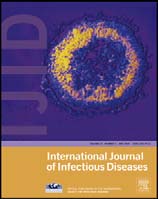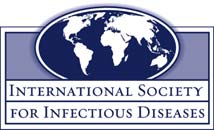Apt_3145 1461.1468
Alimentary Pharmacology & TherapeuticsLactobacillus reuteri therapy to reduce side-effects duringanti-Helicobacter pylori treatment in children: a randomizedplacebo controlled trialE . L I O N E T T I * , V . L . M I N I E L L O * , S . P . C A S T E L L A N E T A , A . M . M A G I S T A´ * , A . D E C A N I O * ,G . M A U R O G I O V A N N I à , E . I E R A R D I § , L . C A V A L L


 International Journal of Infectious Diseases
j o u r n a l h o m e p a g e : w w w . e l s e v i e r . c o m / l o c a t e / i j i d
Outcome of orthopedic implant infections due to different staphylococci§
Dorota Teterycz Tristan Ferry Daniel Lew , Richard Stern Mathieu Assal Pierre Hoffmeyer Louis Bernard Ilker Uc¸kay
a Orthopedic Surgery Service, Geneva University Hospitals and Faculty of Medicine, University of Geneva, 24, Rue Micheli-du-Crest, 1211 Geneva 14, Switzerlandb Service of Infectious Diseases, Geneva University Hospitals and Faculty of Medicine, University of Geneva, Switzerlandc Service of Infectious Diseases, Raymond Poincare´ University Hospital, Garches, Franced Assistance Publique-Hoˆpitaux de Paris, Garches, France
Background: Comparisons of different staphylococci in orthopedic implant infections have rarely been
reported. In this study we assessed total joint arthroplasty infections and other orthopedic implant
infections due to methicillin-sensitive Staphylococcus aureus (MSSA), methicillin-resistant Staphylococcus
aureus (MRSA), and coagulase-negative staphylococci (CoNS).
International Journal of Infectious Diseases
j o u r n a l h o m e p a g e : w w w . e l s e v i e r . c o m / l o c a t e / i j i d
Outcome of orthopedic implant infections due to different staphylococci§
Dorota Teterycz Tristan Ferry Daniel Lew , Richard Stern Mathieu Assal Pierre Hoffmeyer Louis Bernard Ilker Uc¸kay
a Orthopedic Surgery Service, Geneva University Hospitals and Faculty of Medicine, University of Geneva, 24, Rue Micheli-du-Crest, 1211 Geneva 14, Switzerlandb Service of Infectious Diseases, Geneva University Hospitals and Faculty of Medicine, University of Geneva, Switzerlandc Service of Infectious Diseases, Raymond Poincare´ University Hospital, Garches, Franced Assistance Publique-Hoˆpitaux de Paris, Garches, France
Background: Comparisons of different staphylococci in orthopedic implant infections have rarely been
reported. In this study we assessed total joint arthroplasty infections and other orthopedic implant
infections due to methicillin-sensitive Staphylococcus aureus (MSSA), methicillin-resistant Staphylococcus
aureus (MRSA), and coagulase-negative staphylococci (CoNS).